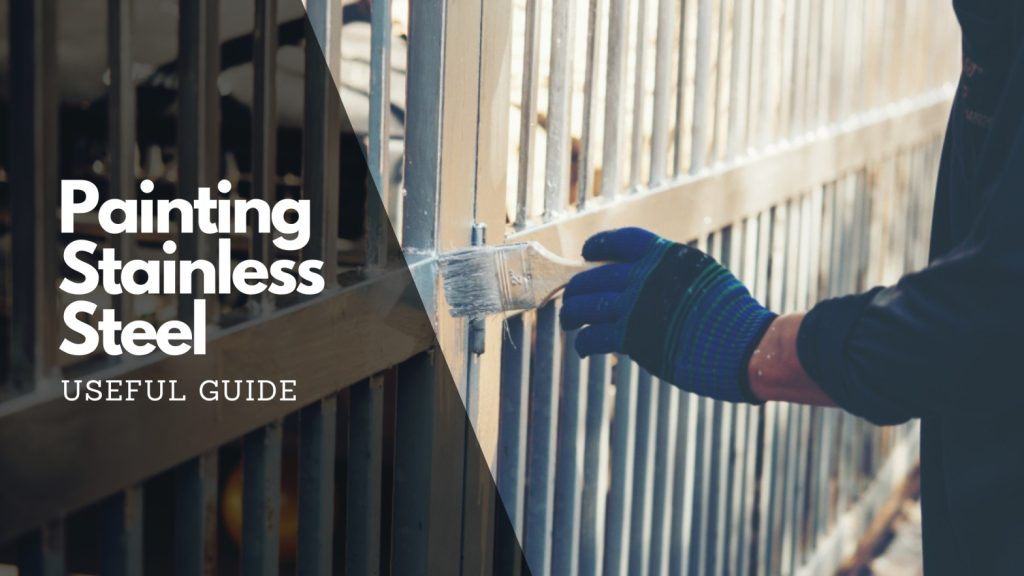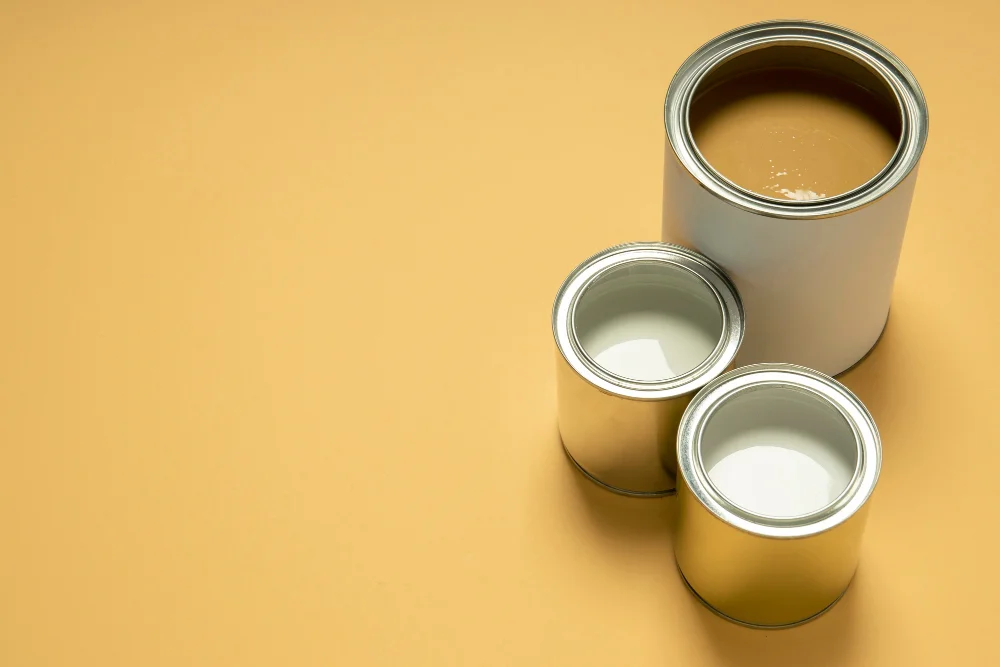
Stainless steel is renowned for its durability and corrosion resistance, making it a popular choice for various applications. However, there may come a time when you want to change the appearance of stainless steel surfaces or add an extra layer of protection. “Can you paint stainless steel?” is a resounding yes! In this article, we’ll delve into everything you need to know about painting stainless steel.
Why Paint Stainless Steel?
Painting stainless steel offers several advantages. Firstly, it allows you to customize the appearance to match your design preferences or blend with your surroundings. Whether it’s a painting kitchen appliance, outdoor furniture, or architectural elements, painting can transform stainless steel into a cohesive part of your décor.
Moreover, painting stainless steel surfaces provides an additional layer of protection against environmental factors like moisture, which can lead to corrosion over time. By applying the right type of paint and following proper techniques, you can prolong the life of your stainless steel items and maintain their aesthetic appeal.
How to Prepare Stainless Steel for Your Painting?

Before you dive into the exciting world of painting stainless steel, it’s crucial to get the preparation right. Properly prepping the surface ensures your paint job will not only look great but also last longer. In this guide, we’ll walk you through the essential steps to prepare stainless steel surfaces for painting.
Sanding or Scratching the Surface
To kickstart the process, you’ll want to sand or scratch the stainless steel surface gently. This step is essential to improve paint adhesion. Use sandpaper with a grit between 120 and 220, or a scratch pad. Create a uniform, fine scratch pattern, enhancing the steel’s grip on the paint. Remember, consistency is key.
Cleaning or Degreasing the Surface
Cleaning and degreasing come next and are equally important. Any residue, grease, or dirt can hinder paint adhesion. Wipe down the stainless steel with a solvent-based cleaner or a mixture of water and vinegar. Make sure the surface is totally dry before you continue.
Applying Paint Primer to the Surface
Now, onto the primer. It’s the unsung hero of your paint job. A good primer ensures a smooth and long-lasting finish. Select a primer specifically designed for metal surfaces. Use a brush or spray to put it on evenly, just like the instructions from the maker say.
Tools to Use to Paint Stainless Steel
When it comes to painting stainless steel surfaces, choosing the right tools is crucial to achieving a smooth and professional finish. In this guide, we’ll explore the essential tools you need for the job and provide insights into when and how to use them effectively.
Paint Brushes
Paint brushes are a go-to tool for precision work when painting stainless steel. Their versatility makes them ideal for small to medium-sized projects. When you use a paintbrush, remember to:
- Choose the Right Brush: Select a brush based on the type of paint you’re using and the surface texture. For stainless steel, synthetic bristle brushes work well with both oil-based and water-based paints.
- Technique: Apply paint in even, smooth strokes, moving in the same direction. This minimizes brush marks and ensures a uniform coat.
Paint Rollers
Paint rollers are excellent for covering large stainless steel surfaces quickly and efficiently. Here’s how to make sure you get the best outcome from them:
- Advantages: Paint rollers offer excellent coverage and a smooth finish, reducing the appearance of brush marks. They are perfect for extensive stainless steel projects.
- Roller Types: Foam rollers work well with water-based paints, while nap rollers are better suited for oil-based paints. Choose the appropriate roller type for your project.
Paint Sprayers
When tackling substantial stainless steel surfaces, paint sprayers are a game-changer. Here are some useful advice on how to use them well:
- Benefits: Paint sprayers provide even and consistent coverage on large areas, saving time and effort.
- Choosing a Sprayer: Select a paint sprayer based on the type of paint and the project’s size. Airless sprayers are great for stainless steel surfaces, and HVLP (High Volume Low Pressure) sprayers are suitable for more detailed work.
Knowing how to paint stainless steel effectively requires the right tools. Whether you’re using a paint brush, roller, or sprayer, each has its advantages and applications. By following these guidelines, you can transform your stainless steel surfaces with a fresh coat of paint.
Types of Paints for Stainless Steel Surfaces

In this guide, we’ll explore various options for painting stainless steel surfaces and their unique characteristics.
Epoxy Paint
Epoxy paint stands out as an excellent choice for coating stainless steel surfaces. It offers exceptional durability, making it ideal for outdoor applications where exposure to harsh weather conditions is common. Epoxy paint bonds tightly to the stainless steel, creating a resilient barrier against corrosion and wear.
The application of epoxy paint is relatively straightforward. Start by cleaning the stainless steel surface thoroughly to ensure proper adhesion. Afterward, apply the epoxy paint evenly using a brush or roller. The curing process is crucial for its effectiveness; it typically involves allowing the paint to dry and harden for at least 24 hours. Once cured, epoxy paint provides a long-lasting finish that can withstand the test of time.
Oil-Based Paint
Oil-based paint is another viable option for stainless steel surfaces. It offers a smooth and glossy finish, enhancing the aesthetic appeal of your stainless steel items. This type of paint is versatile and can be used for both indoor and outdoor projects.
Proper ventilation is essential when working with oil-based paint, as the fumes can be strong. Ensure you paint in a well-ventilated area to avoid inhaling harmful vapors. The drying times may vary, but it’s advisable to allow at least 24 hours for the paint to fully set and cure.
Water-Based Paint
If you’re environmentally conscious, water-based paint is a great choice for painting stainless steel surfaces. It’s eco-friendly and has minimal volatile organic compounds (VOCs), reducing its impact on the environment.
Application of water-based paint is similar to other paints. Clean the stainless steel surface, then apply the paint using a brush, roller, or spray. One important consideration is that water-based paint tends to dry faster than oil-based or epoxy paints, so be prepared to work efficiently.
Tips for a Successful Stainless Steel Painting Project
Stainless steel is a durable and corrosion-resistant material, but sometimes, you may want to give it a fresh look or incorporate it into your design. Painting stainless steel is a great way to achieve this, and with the right approach, it can be a rewarding project. Here are some valuable tips and tricks to ensure your stainless steel painting project is a success.
1. Surface Preparation is Key: Before you begin painting, thoroughly clean the stainless steel surface to remove any dirt, grease, or contaminants. Using smooth sandpaper on the surface can make the paint stick better.
2. Choose the Right Paint: Opt for high-quality paint specifically designed for metal surfaces. Look for paints labeled as “stainless steel paint” or “metal primer” to ensure proper adhesion and durability.
3. Use a Primer: Applying a metal primer before the actual paint can enhance adhesion and longevity. Make sure the primer is compatible with stainless steel.
4. Apply Thin Coats: It’s better to apply several thin coats of paint rather than one thick layer. This prevents drips and ensures a smooth, even finish.
5. Allow for Drying Time: Be patient and allow each coat to dry completely before applying the next. Follow the manufacturer’s recommended drying times.
6. Protect Against Rust: Stainless steel can still develop rust spots if not properly protected. Consider using a clear topcoat or a paint with built-in rust resistance for added durability.
7. Maintain Ventilation: Work in a well-ventilated area or wear a mask, as some paint fumes can be harmful.
Conclusion
Painting stainless steel is a feasible and cost-effective way to revamp your surfaces or appliances. By following these tips and using the right materials, you can achieve a professional-looking finish that enhances the aesthetics of your stainless steel items. So, can you put paint on stainless steel?” is a yes. Embrace the benefits of painting stainless steel, such as improved appearance and corrosion protection. Don’t hesitate to embark on your stainless steel painting project with confidence, knowing that with the right techniques, you can achieve outstanding results. Contact A One Korean Painting now for a successful painting job!

